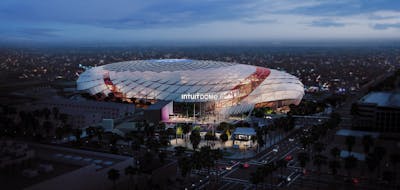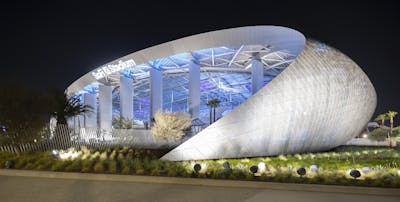
This blog by Scott Martin, PE, LEED AP, DBIA, a principal, project director, and design-build market leader at Walter P Mooreas, and additional blogs from Walter P Moore subject matter experts can be found at Walter P Moore’s blog page on the Building Design+Construction website.
Overview
Recently, Scott Martin, PE, LEED AP, DBIA, was asked to present to a group of aspiring engineers at the Florida A&M-Florida State University College of Engineering. Below is a summary of the presentation “Secrets of a Structural Engineer” that he gave to the students. More experienced engineers in the AEC industry may use this blog as a catalyst to engage new engineers at your firm—as talking points or pass-along information. Our young engineers may find new and helpful information or secrets, which will help them see that not all career paths may be what they envision and may give them more confidence to blaze their own path to a successful career in the AEC industry.
I spent my first two years in the professional world with a small structural engineering firm in Orlando, and it was a learning experience. I worked on several different project types, including sign frames for Universal Studios, exterior light gauge wall framing for a convention center, hotels in the theme park district, and several tilt-wall distribution warehouses in Central Florida. These projects taught me that structural engineering is needed not just for buildings and big projects but also for the small elements that create theme parks and each of the components that make up a larger building.
From there, I moved to Virginia to work for a mid-sized engineering firm that provided structural and MEP services. The structural team that I worked with was about the same size and worked on similar project types as my Orlando firm. I continued to take on more responsibility as I gained experience and my PE license, but I also got the chance to work more closely with MEP engineers, who are typically at a different firm, on most building projects.
After a time, I transferred to the firm’s Raleigh, North Carolina office to build a structural engineering department in their MEP-focused office. In addition to engineering, my responsibilities now included meeting with new clients and convincing them to use our firm to provide structural engineering for their projects. This position proved to be valuable in my career progression because, for the first time, I was learning business skills that extended beyond my engineering education and experience.
I briefly spent time at another engineering firm in Raleigh before coming back home to Florida and landing in the Tampa office of Walter P Moore, where I have been for nearly 20 years.
Current Position & Projects
During my time at Walter P Moore, I have been privileged to be involved in a number of landmark projects for the firm throughout Florida, including performing arts centers, museums, schools, universities, airports, and hospitals, often having many small to mid-sized projects going on concurrently. This changed in 2016 when I had the opportunity to focus on just one project in California, helping a major entertainment company design and build a futuristic theme park expansion based upon a series of outer space movies dating back to 1977.
Working embedded with the entire design, construction, and owner teams in the same building for two years on an Integrated Project Delivery (IPD) project—more on that below—taught me how valuable meetings and touchpoints can be to ensure the entire team remains aligned throughout the design and construction of a mega project. I have carried this lesson to every project I have managed since then.
Delivery Method Secrets
You are likely aware that there are many different methods an owner can use to procure and deliver a project. But each delivery method can require different approaches to how a designer thinks about a project.
In a project delivered by Design-Bid-Build or Construction Manager-At-Risk, the design and construction teams are not contractually related, and the cost of the project is not agreed to until the project is mostly or fully designed. The design team may be liable for design elements that were not clearly shown in their design drawings, but as the building should be fully designed, there is a lower risk of that happening. As long as all of the design I’s are dotted and T’s crossed, there is little risk of project surprises.
In the Design-Build delivery model, the design team works for the design-builder, and a price for the project is typically “guaranteed” with a Guaranteed Maximum Price (GMP) by the design-build team at the early stages of design, say 30 percent complete. Many details of the project and coordination between different trades have yet to be worked out, but the price is still being negotiated with the owner. There is a lot more risk after a price has been set. I have learned the best way to reduce the risk is for the designers to stay hyper-communicative with the design-build team before and after a GMP is set so the team is aware of the known and unknown throughout the project.
Public-private partnerships (P3) are usually delivered using the design-build model; however, the owner often partners with a developer who brings part of the funding and makes their investment back through the life of the building. This introduces parties to the decision-making process whose primary motivation is return on their investment. I have learned the input and influence of a P3 developer cannot be underestimated when a design-build team makes decisions on the best way to build those projects.
Finally, integrated project delivery (IPD) is by far my favorite method to deliver a building project. All parties, from the owner, builder, and architect to the structural engineer, civil engineer, steel subcontractor, and other major trades, are contractually connected and working towards a shared profit pool. We are all working towards the same goal and less worried about pointing out whose fault a mistake may be. In my experience, IPD is truly collaborative.
Final Thoughts
Throughout your engineering career, you will continue to learn, grow, and evolve as a professional based on the opportunities you take, opportunities you make, and your personal passions, which may change over time. You will have disappointments and setbacks in your career—we have all experienced them. Just remember, it is business and not personal.
May these secrets, tips, lessons learned, and takeaways help you establish a lengthy career in the AEC industry. As for the veteran engineers, perhaps this blog serves as a primer or educational tool to benefit you as well as the young engineers at your firm.
One final secret—your passion will be different from the person next to you. Only you can figure out what it will be.


